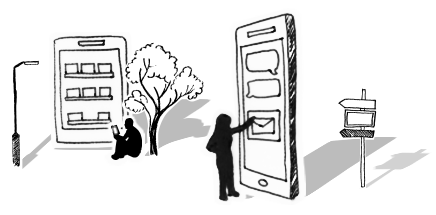




What Tools Do IT Managers Need to Successfully Manage Change?
As well as routine project management and IT programmes, IT managers are often tasked with the people elements of change – an implementation can’t be seen as successful if there is no user adoption.
So what do they need in order to make sure this goes smoothly? IT managers need practical tools that will be sustainable for future use. As all change is unique and needs people to truly own it, all guidelines and templates must be flexible and adaptable to help engage people and enable them to put their own stamp on a project.
Here are my top ten products and tools to support IT managers:
1. Change readiness assessment
There are questions to ask around how ready the business is for a particular change. How likely are the current culture and patterns of working to lend themselves to adoption of the new process or technology? What barriers may appear in the organisation? Readiness assessments allow us to baseline our change capability within an organisation, or a part of an organisation. Readiness assessments can be repeated at various points up until go-live to measure the effectiveness of the change management we have implemented.
Take our sample organisational change readiness assessment
2. A change readiness dashboard
The change readiness dashboard will collate the various readiness assessments and report them as a whole. Through a readiness dashboard we can assess if our change management approach is being successful
3. Change impact analysis
This is a template that allows us to overlay what the change is, with which user groups it is going to affect. We can build on this to determine how we best support for those groups.
4. Stakeholder mapping templates
A means of identifying and classifying key stakeholders according to their influence and relevance to the project. This can feed into a stakeholder management plan.
5. A process for co-creating a key message framework
As well as the key message framework, you’ll also want to co-create the core story with key stakeholders.
Read our blog on the impact of storytelling on your change programme
6. An adaptable communications strategy
Your communications strategy will need to be adaptable and flexible enough that it can be applied to different functions/areas to ensure it reaches all corners of your stakeholder matrix.
7. A guide for line managers to support their teams throughout a project and beyond
You will need a guide for line managers to help them support their teams, and you will also need guides for sponsors and change champions to help them fulfil their roles. This includes ideas for sharing success, communicating at different levels, setting example behaviours, gathering and monitoring feedback, and answering questions. The guides should support the change network to reach the heart of the business, to prepare people and embed a number of changes in behaviour. And, thinking back to sustainability – these guides are inherently reusable.
8. A sponsor roadmap
The roadmap needs to provide a framework for the change project, and set out how the sponsor can support the various project teams and stakeholders, as well as how the project manager can use the sponsor to effectively deal with resistance and challenges.
Here’s the Prosci take on the sponsorship roadmap
9. The creation of sustainable and highly relevant communications materials
Sustainability for any team faced with implementing change, really means three things here: 1 Boosting long term skills. Once a team goes through the process once and has coaching, the process becomes repeatable. 2 Tools should always have a long life-span for example a video should be reusable. This means every item has to be produced with sustainability in mind: ‘where can we use this elsewhere?’ ‘What would need to come out to enable multiple use?’ And 3. Adaptable templates for items such as emails and newsletters can all be used again and again by an IT manager or change team, to create materials for new projects.
10. The development of a one-stop portal
often developed in SharePoint, the portal will house everything people need to know about the new technology, with individual learning pathways that can be tailored and updated for new projects.
To get the latest change tips, advice and guidance directly to your inbox, sign up to our monthly Business Change Digest.

